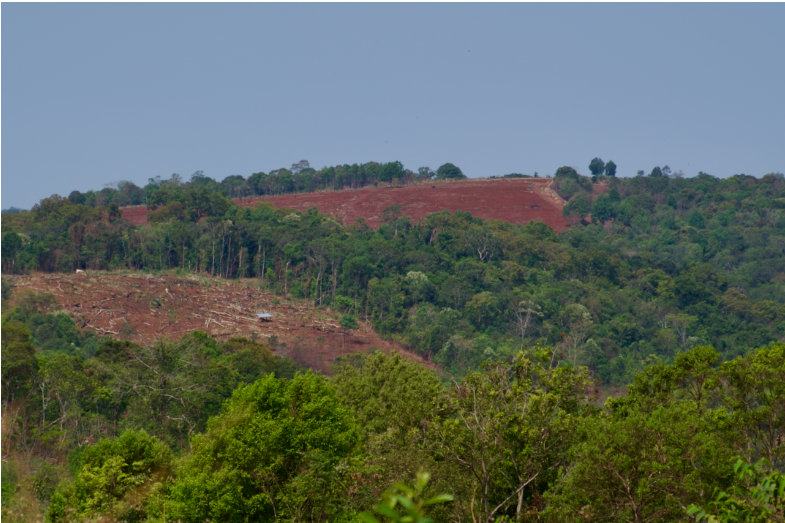- recent study published in the journal Nature Sustainability examines the idea of a “conservation basic income” paid to community members living in or near key areas for biodiversity protection.
- The authors argue that unconditional payments could help reduce families’ reliance on practices that could threaten biodiversity by providing financial stability and helping them weather unexpected expenses.
- But the evidence for the effectiveness of these kinds of cash transfers is scant and reveals that they don’t always result in outcomes that are positive for conservation.
Hundreds of millions of people around the world live in spots considered critical for the protection of wildlife. More than three-quarters of these populations exist in less-industrialized countries, where poverty can contribute to the loss of biodiversity in the pursuit of meeting basic needs
Recently, in a study in the journal Nature Sustainability published May 18, a team of researchers calculated the cost of providing a conservation basic income (CBI) to the people living around biodiversity-rich parks and reserves or other vital areas for species protection, particularly in low- or middle-income countries. The CBI concept stems from similar proposals for what’s known as universal basic income, with the aim of providing a stable source of income and potentially benefiting biodiversity and nature in general.
There isn’t a lot of research on how effective a CBI — or on universal basic incomes, for that matter — would be. Where evidence for CBI does exist, it paints a mixed picture. It sometimes benefits the environment but other times leaves habitats worse off.
Critically, the money wouldn’t have restrictions or conditions, leaving recipients to spend it as they see fit. That freedom provides a “more just, more equitable” pathway to conservation, as opposed to more traditional measures that are often top-down and impose costs on local people, said lead author Emiel de Lange, an interdisciplinary conservation scientist with the Wildlife Conservation Society in Cambodia.

“[CBI] can help people living in conservation areas meet their needs and take more control over the way they interact with their natural environment,” de Lange, who is also a visiting researcher at the University of Edinburgh in the U.K., said in an interview. For example, with a larger financial cushion to handle unexpected expenses, so the thinking goes, families could forgo clearing a patch of forest to plant more income-producing crops, he added.
In 2020, Robert Fletcher, who teamed up with de Lange on this study, and Bram Büscher formally introduced the idea of conservation basic income in the journal Biological Conservation. Fletcher and Büscher are professors in the department of sociology of development and change at Wageningen University & Research in the Netherlands.
Their idea of conservation basic income grew out of the growing prominence of cash transfers as a way to address economic inequality. They had studied “market-based” conservation instruments for several decades and found they “often don’t achieve their goals at all,” Büscher told Mongabay.
These approaches include REDD+, short for reducing emissions through avoided deforestation and forest degradation, and other programs that give payments for ecosystem services. In many cases, little conservation-linked funding actually flows to local communities and Indigenous groups and hasn’t helped goad bottom-up economic development at the levels predicted. Fletcher and Büscher made the case that CBI could help bring about that development while also benefiting biodiversity.

They ended their 2020 paper with a set of questions to determine whether CBI could accomplish these goals — among them, how much to pay out and to whom.
De Lange, Fletcher and their colleagues picked up these questions in the current study. They began by combining existing maps, revealing where people live within key conservation areas. At the top end, distributing CBI could cost trillions of dollars, according to their calculations. But in another scenario, focused on the overlap between population and protected areas in low- and middle-income countries, with per capita gross national incomes of about $13,200 or less, it would cost a comparatively modest $478 billion per year to distribute $5.50 a day per person.
That figure is substantially higher than how much goes to conservation globally every year, the authors wrote, which in 2020 was about $133 billion, according to the U.N. Environment Programme. It’s also higher than the $200 billion per year for biodiversity protection, which nearly 200 countries pledged by 2030 to reach at the 2022 U.N. Biodiversity Conference in Montreal. However, reports suggest reversing biodiversity loss will require hundreds of billions more per year.
The authors highlight that their $478 billion figure is about as much as global spending on subsidies for “environmentally harmful energy and agricultural production” — in the form of payments to fossil fuel companies, for example. Eliminating those subsidies and then taxing the industries that continue the practices could be a way to pay for a CBI, the authors write. The team suggests reallocating these resources could pay for a CBI in less-industrialized countries, though others propose using annual subsidies to make these industries more sustainable and fund nature restoration projects.

